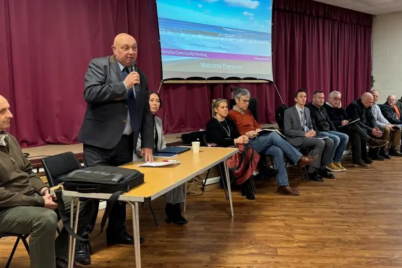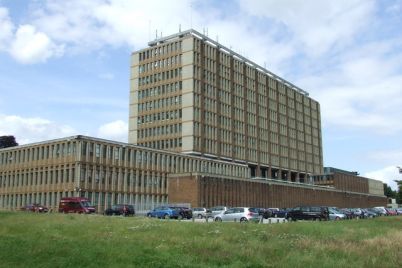Councillors in Norfolk have backed a landmark plan to deliver new powers and funding for jobs, transport, housing and economic growth, paving the way for a devolution agreement that could reshape governance in the region.
On 16 October, after debate at full council earlier in the day, Norfolk County Council’s cabinet voted to proceed with devolution.
Under the Government’s devolution priority programme, Norfolk and Suffolk councils have been offered the transfer of powers and funding from Whitehall, enabling decisions on skills, transport, housing and growth to be made locally. In addition, the arrangement would include a multi-million pound investment fund lasting for 30 years, to be spent on county priorities.
Cllr Kay Mason Billig, leader of Norfolk County Council, described the decision as historic and long-awaited. She said the region would now have the opportunity to decide where to invest millions for the benefit of residents, and would gain a seat “at the UK’s top table”. She added that devolution, together with the new investment fund, would allow local leaders to respond to needs on training, industrial and housing sites, and transport links to connect Norfolk and Suffolk and unlock growth.
Devolution required the support of both county councils. Suffolk County Council’s cabinet voted in favour earlier, on 2 October, and Norfolk’s cabinet decision now completes that requirement. The plan envisages that, from May 2026, a mayor elected by local voters will lead a new combined authority comprising the mayor and councillors from the two counties.
The newly formed authority and mayor would assume responsibility for a range of functions including local transport, skills and jobs, housing development, economic growth, regeneration, and environmental and climate change policy. From 2027, the mayor and combined authority could also take on responsibilities for policing and crime commissioner functions and fire and rescue authority functions.
The benefits proposed for devolution include a directly elected mayor giving Norfolk and Suffolk a stronger voice with central government, the ability to target funding to local priorities, greater freedom to unlock employment and housing sites, investment in skills and business attraction, and the possibility of securing further powers and funding in future.
This agreement builds on earlier moves earlier in the year. In January, Norfolk council debated its interest in joining the Government’s priority devolution programme. At that time, ministers had invited councils to express interest in devolved powers, particularly in two-tier areas such as Norfolk, where county and district councils both share responsibilities. Councillor Mason Billig noted that while central government had pushed for quick decisions, joining the priority list was essential to avoid being left behind in accessing funding and influence. She also emphasised collaboration with district councils to consider local government reorganisation and unitary authority structures.
If ministers agree to Norfolk and Suffolk entering the devolution programme, proposals to form a mayoral combined authority covering the two counties would be further developed. Elections for the mayor could take place in May 2026. The timing is critical, as in previous devolution negotiations, local election schedules have been postponed to allow new governance models to be established before elections.
Devolution is central to the Government’s broader vision for redistributing power away from Whitehall and towards local regions. The Devolution White Paper outlines a framework in which Mayors, working within Strategic Authorities, will have stronger roles in transport, housing, skills, and regeneration. The White Paper proposes that Mayors have authority to manage multi-year investment budgets (Integrated Settlements), call in strategic planning decisions, and align regional services such as energy, health, and public services boundaries. One goal is to end a “deals-based” approach and embed devolution in law, giving clearer powers from the start.
In the housing and planning domain, devolution plans include giving areas the requirement to adopt Spatial Development Strategies, allowing Mayors to intervene in major planning applications, and introduce a Mayoral Infrastructure Levy to ensure new developments come with supporting infrastructure. In parallel, Mayors would gain oversight of housing grant funding and be empowered to steer affordable housing strategy.
In skills and employment, devolution would remove ringfences from funding streams such as Skills Bootcamps and Free Courses for Jobs, giving authorities flexibility to align education and training with regional business needs. Mayoral Strategic Authorities would also take joint ownership of Local Skills Improvement Plans alongside employer bodies and take roles in youth employment guarantees.
In transport, the new authority would have control over local transport infrastructure, bus networks, and influence over rail services in partnership with central organisations. The Devolution White Paper promises that frictions in taking buses back under public control will be reduced, and that Mayors will have stronger powers to plan roads and coordinate networks with less oversight.
On environment and climate goals, devolved powers will allow Mayors and authorities to manage retrofit programmes, deliver local energy strategies, coordinate nature recovery, and lead local heat network planning. Combined authorities would also have roles in shaping energy infrastructure in partnership with national operators.
Public services integration is another dimension of the devolution model. The White Paper signals that where geographic alignment exists, Mayors could take over responsibilities for policing, fire and rescue, health improvement, and local NHS partnerships. Over time, the ambition is to realign institutions such as job centres, police, probation, and health services so that services are more coherent and accountable locally.
Local government reorganisation is also in focus. In areas with two tiers of local government, restructuring into unitary authorities may offer efficiencies, clearer accountability, and stronger local capacity. The White Paper encourages councils in two-tier areas to propose reorganisations in tandem with devolution models, with the goal of creating authorities of scale and avoiding delay in implementing devolution.
The Norfolk and Suffolk devolution scheme represents a major change in how decisions are made and how public funding is allocated. By placing economic, housing, transport and many public services under regional control, the region hopes to respond more responsively to local needs and priorities rather than being subject to central government direction. The model promises greater accountability through a directly elected mayor and aligns with the national ambition to shift power to local communities.
However, the success of this endeavour will depend heavily on the relationships between county, district, and parish councils, ensuring that local voices are heard and that reorganisation does not alienate communities. As the new authority forms, delicate balances must be struck between regional planning and local autonomy.
With councillors now backing devolution and the necessary support from both counties secured, Norfolk and Suffolk are poised to begin implementing the next phase—engaging in detailed negotiations with government, working with neighbouring councils, setting up the combined authority framework, and preparing for a mayoral election in 2026. If all goes to plan, the region will have greater control over its future, better aligned resources for growth, and a platform to shape its destiny.













